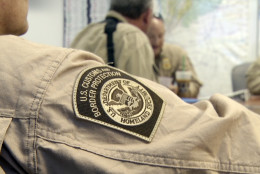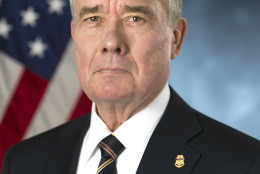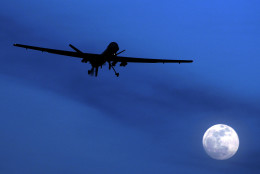Customs and Border Protection
-
Members of U.S. Customs and Border Patrol participate in Police Week ceremonies in Washington, D.C.
May 16, 2016 -
Customs and Border Protection is streamlining its services to businesses by centralizing its import operations in 10 Centers of Excellence and Expertise.
May 02, 2016 -
The House Border and Maritime Security Subcommittee questioned executives from Customs and Border Protection, the General Services Administration and the National Treasury Employees Union about the current status of and challenges to CBP’s hiring, retention and infrastructure.
April 20, 2016 -
Leaders of R&D components of DHS detailed technological projects and innovation processes at a Senate Homeland Security Subcommittee budgetary hearing.
April 08, 2016 -
The Office of Information Policy published data on FOIA request processing from the annual reports of 100 agencies.
March 15, 2016 -
Nicholas Doucet, executive director for operations for Air and Marine Operations at Customs and Border Protection, tells Federal News Radio's Eric White on Federal Drive with Tom Temin how AMO is looking to increase its effectiveness.
March 09, 2016 -
DHS Secretary Jeh Johnson defended his agency's $40.6 billion fiscal 2017 budget, telling a congressional committee that cybersecurity funding would help hiring efforts.
March 08, 2016 -
Charlie Armstrong, who retired as the chief information officer of the Customs and Border Protection directorate in the Homeland Security Department on Feb. 4, said the success of the Automated Commercial Environment program is one of the highlights of his 32-year career in government.
February 18, 2016 -
Charlie Armstrong called it a career after spending the last seven-plus years as the assistant commissioner for the Office of Information and Technology and CIO for CBP.
February 15, 2016 -
Rep. Henry Cuellar (D-Texas) authored a provision in the fiscal 2016 omnibus spending bill requiring OMB to create governmentwide customer service standards.
February 05, 2016 -
According to U.S. Customs and Border Protection (CBP), it takes about 20 seconds to identify and verify each person’s identity using government databases to determine whether or not the individual is on a watch list or unwelcome on U.S. soil for any reason. That’s not fast enough.
February 05, 2016 -
Customs and Border Protection has been testing body-worn video cameras for its officers, and has passed along the lessons it's learned to other agencies.
January 05, 2016 -
Customs and Border Protection, the nation's largest law enforcement agency, has been testing body worn video cameras for its officers, putting it ahead of other agencies mired in camera rule making. CBP Commissioner Gil Kerlikoswke gives Federal Drive with Tom Temin an update.
January 05, 2016 -
The DHS Privacy, Civil Rights and Civil Liberties Unmanned Aircraft Systems Working Group, which wrote the best practices, acknowledged that not all suggestions will apply to every agency.
January 04, 2016 -
In Tuesday's federal headlines, a new report from the Government Accountability Office says the Department of Defense is falling behind on the plan to shrink its civilian workforce
December 29, 2015















